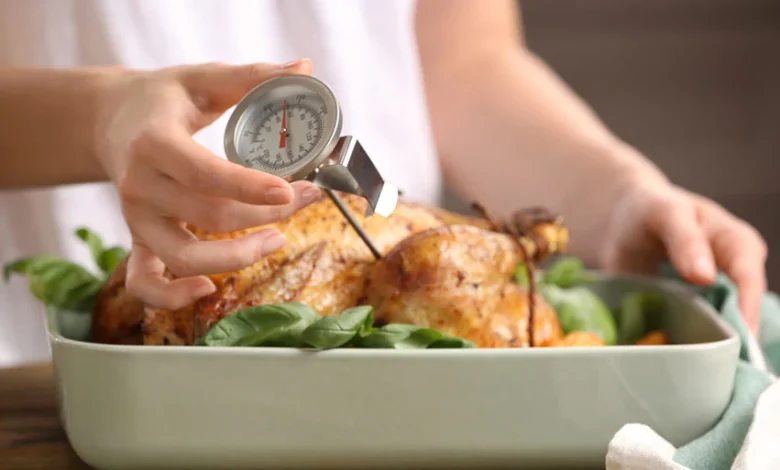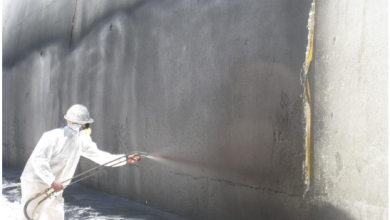Why Every Home Needs a Freezer Thermometer for Food Safety: The Ultimate Guide

The Science Behind Food Safety: Why Temperature Matters
Food safety is an intricate science that plays a critical role in preventing foodborne illness and ensuring the longevity of food products. One of the core principles driving this science is temperature control, particularly in regards to freezing and storage. The safe storage of food in the freezer is largely influenced by temperature because many harmful bacteria remain dormant at freezing temperatures, yet can reactivate when temperatures fluctuate. Understanding the science behind food safety is essential both for consumers and food handlers, as it aids in the avoidance of severe health risks.
The Zoning Myth: Understanding Safe Temperature Ranges for Freezers
Many people believe that freezing temperatures mean that food is automatically safe to eat, but this is a misunderstanding known as the zoning myth. The U.S. Food and Drug Administration (FDA) recommends that freezers maintain a constant temperature of 0°F (-18°C) or lower to safely preserve food. This temperature is crucial since it slows down enzymatic activity and prevents the growth of most bacteria. However, the myth arises when people think that any temperature within the freezing range is adequate. Temperatures just above 0°F can still allow for microbial growth, often leading to spoilage that may not always be detectable through sight or smell. Therefore, the importance of monitoring precise temperature within freezers cannot be overstated. A reliable freezer thermometer ensures that the entire freezer, not just a portion, maintains proper food-safe temperatures.
How Proper Temperature Control Prevents Bacterial Growth
At temperatures below 32°F (0°C), most bacteria that cause foodborne illnesses enter a dormant state, significantly reducing their chances of proliferation. However, it is crucial to note that certain pathogens, particularly Listeria monocytogenes and Yersinia enterocolitica, can survive and even thrive at refrigeration temperatures, albeit with slow growth rates. The freezer acts as a barrier to these threats by keeping food at lethal temperatures for most harmful microorganisms. When temperatures fluctuate—due to opening and closing the freezer door frequently, or malfunctioning equipment—this creates an environment conducive to bacterial growth and increases the risk of food spoilage. Thus, proper temperature control is not just about keeping food frozen; it’s about preventing the growth of bacteria and ensuring that food remains fresh and safe for consumption.
The Hidden Dangers of Temperature Fluctuations in Your Freezer
Temperature fluctuations pose hidden dangers that most consumers may not consider. For instance, if a freezer door is left partially open or the appliance is overloaded, it can trap warm air, causing temperature spikes. These spikes may encourage bacterial growth and spoilage, leading to food waste and potential health risks. Moreover, power outages can also pose significant challenges; food can thaw and refreeze if the temperature rises above 32°F (0°C) for an extended period. Foods that may appear safe to eat after being thawed can harbor dangerous pathogens. Therefore, having a freezer thermometer not only alerts you to these fluctuations but also empowers you to take proactive measures to maintain food safety at all times.
Your Freezer Thermometer: An Unsung Hero of Your Kitchen
While commonly overlooked, a freezer thermometer is an indispensable tool for every kitchen. This simple device plays an unsung role in food safety by ensuring that your frozen goods remain in the desired temperature zone. Irrespective of the sophistication of your modern freezer, a thermometer offers the assurance that the internal environment is suitable for food storage.
Types of Freezer Thermometers: Which One is Right for You?
When shopping for a freezer thermometer, several types can cater to your specific needs. Mechanical thermometers use traditional liquid-filled or bimetallic elements that display temperatures on a dial, providing straightforward readings without the need for power or batteries. These are perfect for those who appreciate simplicity. Alternatively, digital thermometers provide more precision, often displaying temperatures in real-time, making them suitable for those focused on accuracy and technology’s ease of use. Smart thermometers come equipped with Wi-Fi or Bluetooth capabilities, offering alerts directly to your smartphone if temperatures fall outside the safe range, an ideal solution for tech-savvy users who want to monitor their food from anywhere. Selecting the right thermometer will depend on your personal preferences and requirements for accuracy, technology, and ease of use.
How to Properly Use and Maintain Your Freezer Thermometer
To ensure accurate readings, proper placement and maintenance of your freezer thermometer are crucial. It is recommended to place the thermometer in the center of the freezer for an accurate overall reading, away from the walls where temperatures may differ. Regular checks should be conducted, as a good practice is to monitor the thermometer weekly or at least once per month to catch any potentially harmful fluctuations. Additionally, maintaining your thermometer is vital; should it start to show inconsistencies, it’s advisable to calibrate or replace it immediately. Digital thermometers often come with user manuals outlining current calibration and maintenance processes. Consistent monitoring of your freezer temperature not only guarantees food safety but also extends the life of your stored food, preserving flavors and nutritional value.
The Impact of a Thermometer on Your Food’s Freshness and Flavor
The freshness and flavor of your food are intrinsically linked to proper temperature control. Temperature deviations can lead to changes in texture, flavor degradation, and nutritional losses. For instance, delicate items like ice cream can develop ice crystals due to temperature fluctuations, leading to a grainy texture and compromised flavor. Meat and fish, when stored at fluctuating temperatures, can lose moisture and become unpalatable. Consistently maintaining a safe temperature with a reliable freezer thermometer allows for prolonged storage with minimal impact on quality, ensuring that food retains its intended taste and textures. Furthermore, understanding how temperature affects food can enhance your meal preparation and storage practices, guiding you toward delicious, safe, and nutritious meals.
Common Misconceptions About Freezer Thermometers and Food Storage
In the realm of food storage, misconceptions proliferate, often causing egregious mistakes that compromise food safety and quality. Recognizing these misconceptions is vital to better manage food storage.
Debunking the ‘Set It and Forget It’ Mentality: What You Need to Know
The belief that once food is placed in the freezer, it requires no further oversight, is a dangerous myth. Many individuals treat their freezers as “set it and forget it” zones; unfortunately, this approach can lead to disastrous outcomes. Factors such as power outages, freezer malfunctions, and each item’s temperature during storage must be regularly assessed. Even with high-quality appliances, issues arise, thus requiring heightened vigilance to ensure food safety. It’s important to establish regular routines to check the thermometer and routinely audit your food supplies to ensure that the items are being stored within safe limits. This active maintenance will empower you to uphold rigorous food safety standards.
How Long Can You Really Store Food in the Freezer?
Another common misconception involves the FIFO (first in, first out) system followed in freezer use. People often believe that food can be safely stored indefinitely at freezing temperatures. While it’s accurate that freezing can halt bacterial growth, it’s crucial to understand that food can lose quality, flavor, and nutritional value over time. Generally, 6 to 12 months is the recommended safe storage limit for most items, with some foods having shorter or longer optimal storage spans. For example, while cooked meats can last about 2-6 months, raw meats can last 6-12 months. Keeping a well-organized inventory of your frozen food items and their storage times will enhance the safety and quality of your meals.
The Truth About Freezer Burn: Prevention Tips You Need
Freezer burn is a term commonly tossed around, but many are unsure what it truly means or how it occurs. It results from air exposure, causing dehydration and oxidation of food, which leads to off-flavors, discoloration, and an unappetizing texture. Contrary to popular belief, freezer burn doesn’t indicate food spoilage or danger; however, it can considerably diminish the quality of what you’re eating. To prevent freezer burn, proper packaging is essential. Use airtight containers or heavy-duty freezer bags to remove as much air as possible before sealing. Additionally, maintaining a stable temperature in the freezer will minimize the risk of freezer burn by preventing ice crystals from forming. Employing these practices will preserve your food’s integrity, flavor, and quality.
Mastering Food Safety: Beyond the Freezer Thermometer
While a freezer thermometer is a crucial tool for food safety, it is only one element within a broader food safety framework. Mastering food safety involves an understanding of technological advancements, best practices, and reliable educational resources.
Integrating Technology: Smart Freezers and Digital Thermometers
Modern technology provides various advancements in food safety, particularly through smart freezers and digital thermometers. Smart freezers are equipped with sensors that actively monitor the internal temperature and alert you through apps or alarms if the temperature drifts outside safe limits. Likewise, digital thermometers allow for accurate readings that can alert you in real-time, ensuring that any potential issues can be addressed immediately. As technology continues to integrate into our daily lives, bringing these smart devices into your kitchen can help you take proactive measures toward food safety. Moreover, cookbooks and apps are inundated with recipes emphasizing the correct handling and storage of food, allowing for informed decisions in meal preparation.
Food Safety Best Practices: Planning Your Meal Prep with Confidence
Effective meal planning is a cornerstone of food safety. Understanding the principles of food safety can enhance your meal prep process—increasing efficiency while minimizing waste and risk. Start by organizing your fridge and freezer based on the temperatures of different zones within the appliances, choosing cooking methods that align with food safety standards, and preparing meals that keep for longer periods. Moreover, implementing systems for FIFO when storing food will empower you to consume older items first, maintaining their quality and safety. Constructing a plan also involves being vigilant about food recalls and keeping abreast of food safety news to respond quickly to any issues that arise.
Educational Resources: Where to Learn More About Food Safety
The quest for food safety knowledge should not end here. Numerous resources exist to further educate consumers on safe food handling, storage methods, and hygiene practices. The FDA, USDA, and Centers for Disease Control and Prevention (CDC) offer extensive guidance and resources focusing on food safety and storage. Additionally, certified kitchen workshops and community programs can provide hands-on training, helping individuals implement safety practices in their own kitchens. Online courses and cooking classes often include segments dedicated to food safety principles, allowing you to broaden your understanding in an interactive setting. Taking the initiative to educate yourself and others will not only safeguard your health but also foster a culture of food safety in your home.
In conclusion, possessing a freezer thermometer is fundamental in maintaining food safety within your household. Understanding the intricacies of temperature management, debunking common myths, and integrating modern technology plays an integral role in optimizing food quality and safety. By embracing best practices, you not only promote health but also delight in the flavors and nutritional value that well-preserved food can offer. Take charge today in mastering the art of food safety and make a commitment to a healthier kitchen.





